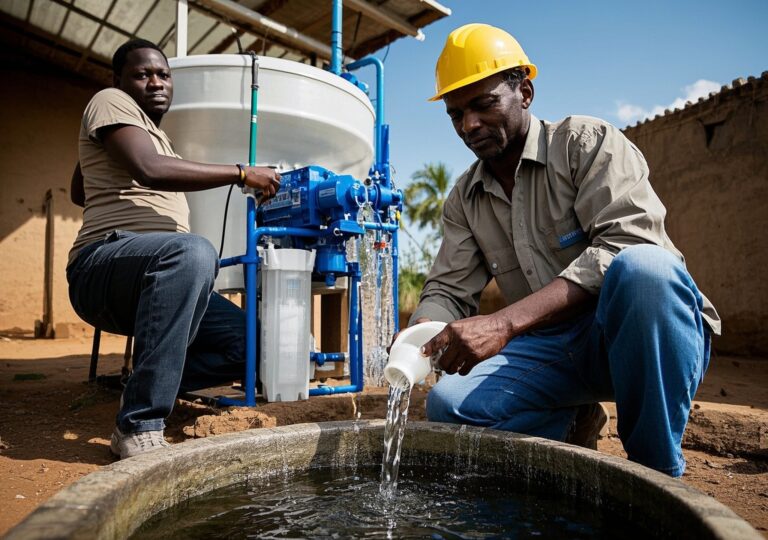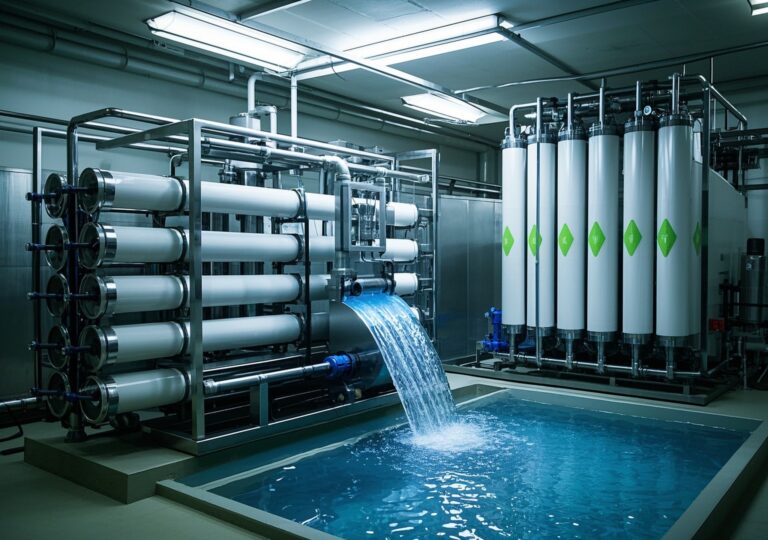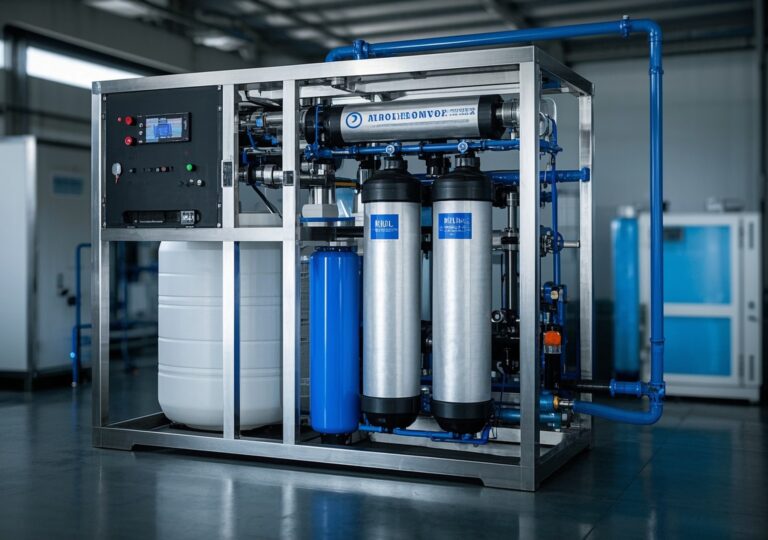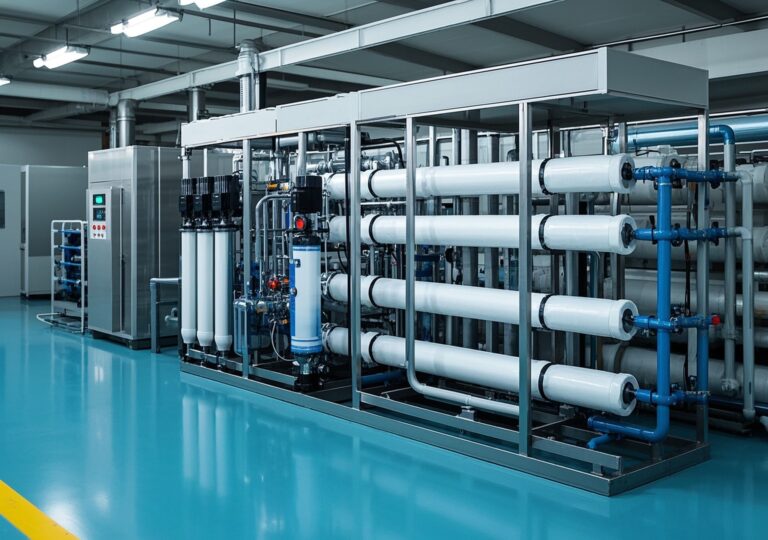Daring Breakthroughs in RO: Evaluating Commercial Water Treatment Trends
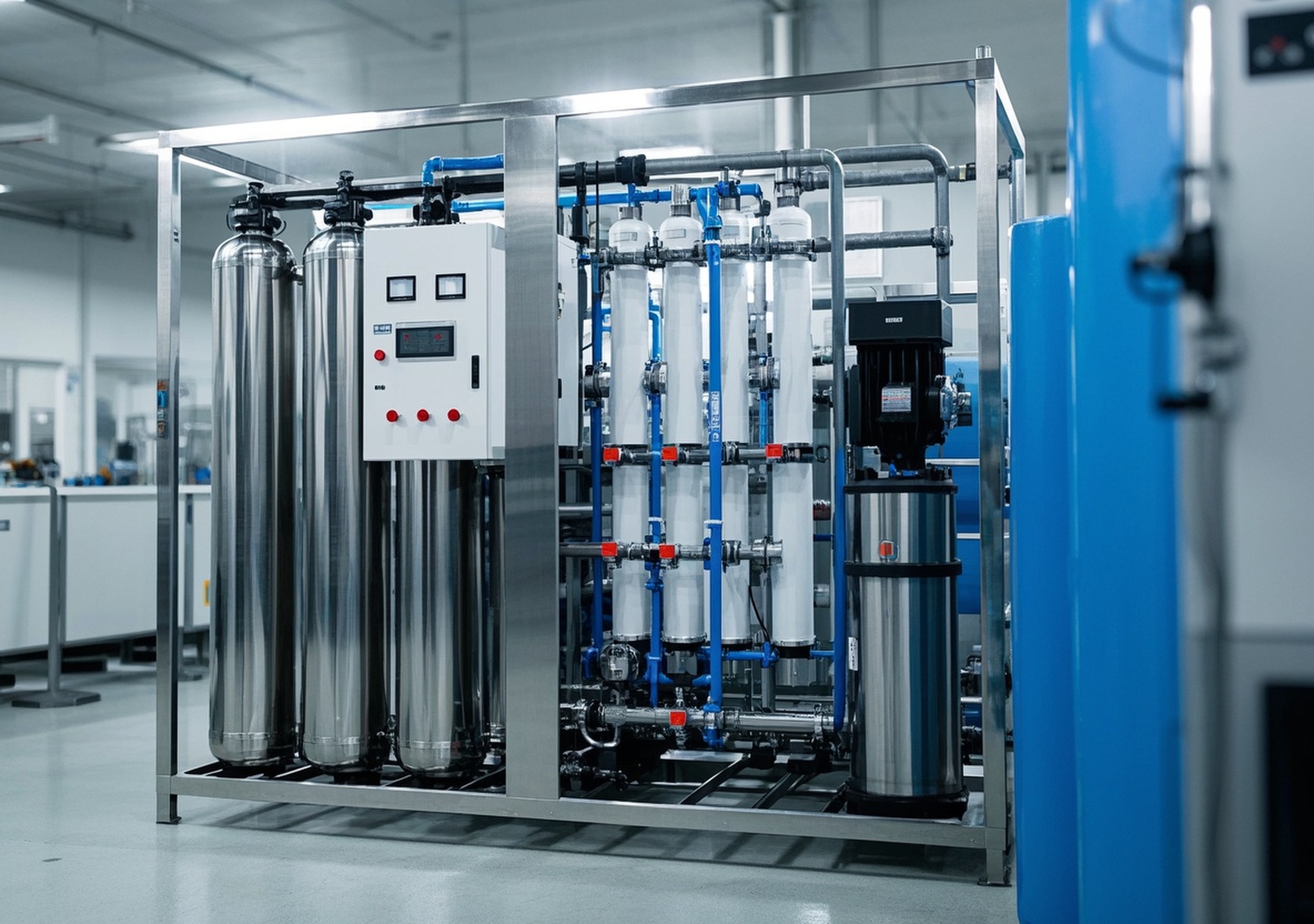
Daring Breakthroughs in RO: Evaluating Commercial Water Treatment Trends
Reverse osmosis (RO) technology has revolutionized the water treatment industry, especially for commercial applications where high purity and efficiency are paramount. With increasing concerns about water quality and scarcity, well water treatment near me searches are surging as businesses and communities seek reliable local water purification solutions. This article delves deep into the latest advances, technical insights, and practical considerations surrounding commercial RO systems, offering a holistic view for industry professionals and decision makers alike.
1. Introduction: Understanding Commercial Reverse Osmosis Systems
Commercial RO systems are engineered to remove dissolved solutes, organic molecules, and microbial contaminants from water through a semi-permeable membrane under pressure. These systems are critical in sectors where water quality directly impacts product quality, operational safety, or compliance with stringent regulations. From food and beverage manufacturing to pharmaceuticals and hospitality, RO units offer a scalable, cost-effective solution to treat well water and other sources.
Given the critical role of water in industrial processes, innovative breakthroughs in system design, membrane technology, and automation are reshaping how commercial RO units deliver performance, reliability, and operational economy.
2. Equipment Overview and Performance Advantages
Modern commercial RO devices typically offer:
- High Throughput: Capacities range from several hundred to thousands of gallons per hour, tailored to diverse industrial demands.
- Advanced Membranes: Incorporation of thin-film composite (TFC) membranes with high salt rejection rates (typically >99%) ensuring superior water purity.
- Energy Efficiency: Integration of energy recovery and low-pressure pumps to minimize operating costs.
- Durability & Automation: Corrosion-resistant materials and PLC-based controls enable long service life and streamlined operation.
Compared to conventional water treatment technologies, commercial RO systems provide consistent removal of a broad range of dissolved solids, pathogens, and organic contaminants. This versatility and precision in water quality regulation grant RO an edge in competitive markets emphasizing sustainability and regulatory compliance.
3. Process Flow Overview
The commercial RO water treatment process can be segmented into several critical stages, each vital to ensure reliable system performance:
| Stage | Description | Key Functions |
|---|---|---|
| 1. Pre-treatment | Removal of suspended solids, chlorine, and hardness | Multimedia filtration, activated carbon adsorption, water softening |
| 2. High-Pressure Pump | Pumps feedwater at sufficient pressure to overcome membrane osmotic pressure | Ensures proper flow rate and system pressure |
| 3. RO Membrane Filtration | The semi-permeable membrane separates impurities from permeate water | Salt rejection, organic removal, microbial barrier |
| 4. Post-treatment | Water polishing to meet specific use requirements | Mixed-bed deionization, UV sterilization, pH adjustment |
To assist comprehension, the following simplified flow diagram represents the process:

4. Key Components Explained
Multimedia Filter
Typically the first barrier, multimedia filters utilize layers of sand, gravel, and anthracite to eliminate particulates and turbidity from raw well water. This protects downstream equipment from fouling and prolongs membrane life.
Activated Carbon Filter
Adsorbs residual chlorine, organic compounds, and unpleasant tastes or odors. Chlorine removal is especially critical as exposure can irreversibly damage RO membranes.
Water Softener
Removes calcium and magnesium ions that cause scaling on membranes, thus enhancing operational stability and reducing cleaning frequency.
High-Pressure Pump
A robust, energy-efficient pump pressurizes pretreated water to the levels (150–600 psi) necessary for RO membrane filtration. Its pump curve and power consumption directly affect system energy footprint.
RO Membrane Element
Typically spiral-wound TFC membranes, characterized by high permeability and salt rejection. Each element is designed to treat a set volume of feedwater before replacement, influenced by feedwater quality and operational parameters.
5. Membrane Technology and Maintenance
Membrane performance dictates overall system efficiency and water quality. Different membrane types exhibit varied salt rejection and fouling resistance:
- Cellulose Acetate Membranes: Good chlorine tolerance but lower salt rejection, mostly phased out.
- Thin-Film Composite (TFC): Most common today, excellent salt rejection, better flux rates.
- Polyamide-Based Membranes: Enhanced chemical resistance and longevity.
Maintenance advice: Routine flushing and cleaning protocols prevent scaling and biofouling. Chemical cleaning every 3–6 months prolongs membrane life, typically 3–7 years depending on feedwater characteristics. I recommend establishing a strict monitoring schedule using integrity tests and permeate quality measurements to predict membrane replacement proactively.
6. Post-Treatment Technologies for Quality Assurance
Depending on application requirements, post-treatment units optimize water for safety and compliance:
- Mixed-Bed Deionization: Removes residual ionic impurities, producing ultra-pure water for pharmaceutical or microelectronics sectors.
- Electrodeionization (EDI): Continuous ion removal without chemical regenerants, reducing operating cost and chemical waste.
- Ultraviolet (UV) Disinfection: Employs UV light to inactivate bacteria, viruses, and spores, ensuring microbial safety.
- pH Adjustment: Ensures potable water standards or process-specific pH requirements.
7. Typical Industry Applications: Case Studies
Food & Beverage Processing
In a recent project with a mid-size beverage manufacturer, we installed a 5,000 GPD RO system treating local well water. Prior to the upgrade, high turbidity and hardness caused frequent downtime and product quality deviations. Post-installation, total dissolved solids (TDS) dropped below 50 ppm, operational disruption decreased by 70%, and product shelf-life improved measurably within three months.
Pharmaceutical Manufacturing
For a contract manufacturing organization, compliance with USP purified water standards was mandatory. An integrated RO-EDI system was implemented, coupled with UV sterilization. This combination ensured endotoxin-free water and consistent conductivity below 1 µS/cm, enabling uninterrupted API production and regulatory approval.
Hospitality Sector
Hotels demand soft, odorless water to enhance guest experience and protect plumbing. Implementing localized RO treatment at well sources led to a 40% reduction in scale-related maintenance, positively impacting operational expenditure and guest satisfaction scores.
8. Pricing Influencers and Investment Considerations
| Factor | Impact on Price | Comments |
|---|---|---|
| Material Quality | High | Stainless steel vs. plastic components affect durability and cost |
| Customization Level | Moderate to High | Tailored system design for specific feedwater or industry needs |
| Membrane Type | Moderate | Advanced membranes increase upfront costs but improve efficiency |
| Capacity & Scale | High | Larger flow rates proportionally increase price |
| Operating Costs | Ongoing | Energy, chemicals, maintenance must be evaluated versus budget |
Financing options, such as leasing or performance contracts, can reduce capital expenditure barriers and optimize return on investment. In my consulting experience, aligning equipment features with precise process needs maximizes lifecycle value and avoids costly oversizing or underperformance.
9. Installation and After-Sales Support
Successful commissioning demands thorough site survey, feedwater analysis, and power availability checks. Installation should include:
- Foundation and space preparation
- Plumbing and electrical connections
- Control system programming and calibration
- Operator training on maintenance and safety
I have observed that suppliers offering remote diagnostics and preventive maintenance contracts achieve higher uptime and customer satisfaction. Transparent service level agreements (SLAs) with guaranteed response times are crucial for industrial clients.
10. Maintenance Strategy and Troubleshooting
Key maintenance tasks encompass:
- Regular backwashing of pre-filters
- Membrane integrity testing with pressure and conductivity checks
- Renewal of carbon and softening media per schedule
- Periodic chemical cleaning with anti-scaling and bio-fouling agents
- Monitoring of permeate quality for early detection of membrane breach
Common issues include membrane fouling, feedwater pressure fluctuations, and scale formation. Rapid response by in-house technicians trained in diagnostics reduces downtime. Maintaining an inventory of critical spare parts such as pumps, membranes, and valves ensures operational continuity.
11. Manufacturer Profiles and Market Positioning
Leading manufacturers in commercial RO systems demonstrate global certifications such as ISO 9001 and NSF/ANSI compliance, underscoring quality and safety adherence. Many have expanded modular designs for ease of transport and scalability, responding to rising local demand exemplified by systems housed in ISO shipping containers for mobile or remote site deployment.
Market penetration strategies increasingly emphasize integration with digital platforms, enabling real-time monitoring and predictive maintenance. This trend supports faster troubleshooting and lifecycle management, which are decisive competitive advantages.
12. Conclusion: Choosing the Right RO System for Your Needs
Selecting a commercial reverse osmosis water treatment system is a strategic decision influencing product quality, operational expense, and regulatory compliance. Advances in membrane materials, automation, and modular system design have made these technologies more accessible and reliable than ever before.
Whether addressing local groundwater challenges through well water treatment near me or upgrading existing infrastructure, it is essential to assess feedwater composition, capacity needs, and post-treatment requirements holistically. Vendor support, maintenance capability, and total cost of ownership equally bear on success.
Feel empowered to consult with water treatment experts to identify tailored solutions that align with your industrial objectives and sustainability commitments. With the right commercial RO system, you are investing not just in water purification but in long-term business resilience.
References
- IBISWorld – Water Collection, Treatment & Supply Market Research Report (UK, 2015-2030)
- Army Technology – ContenO Container-based Local Water Purification Systems Overview
- WIEGO – Photovoice Study on Water Access Inequalities, 2024

